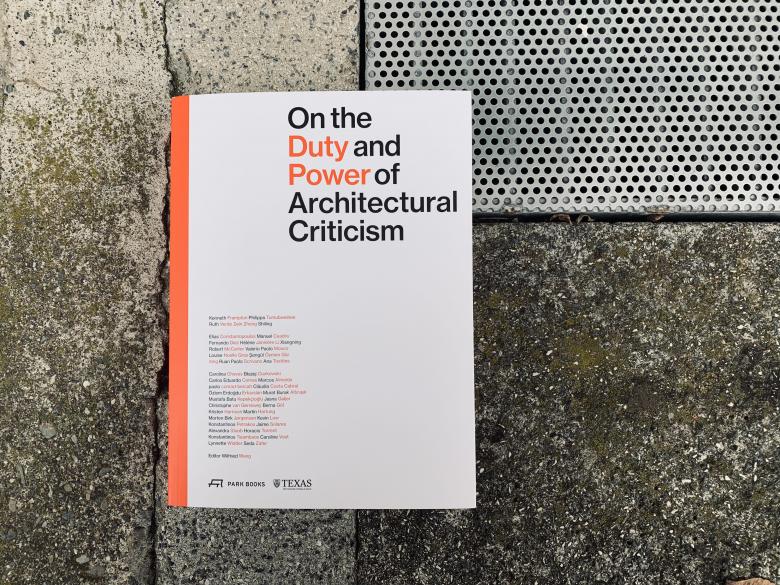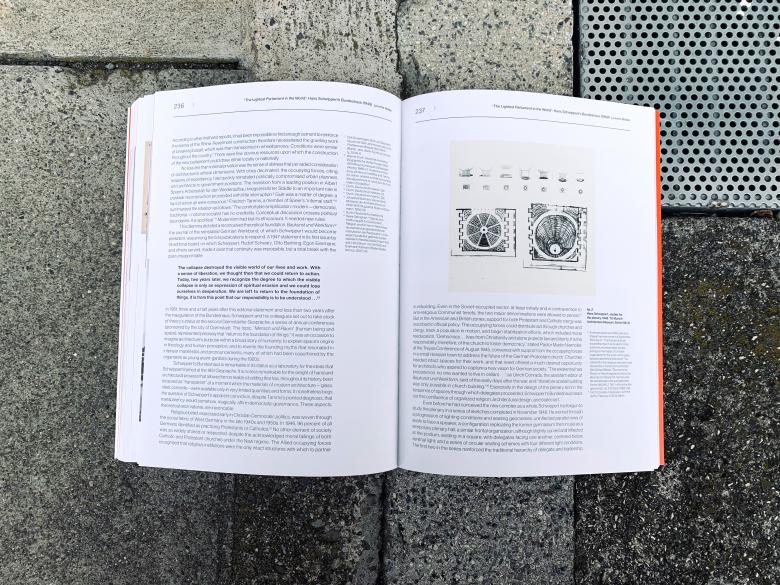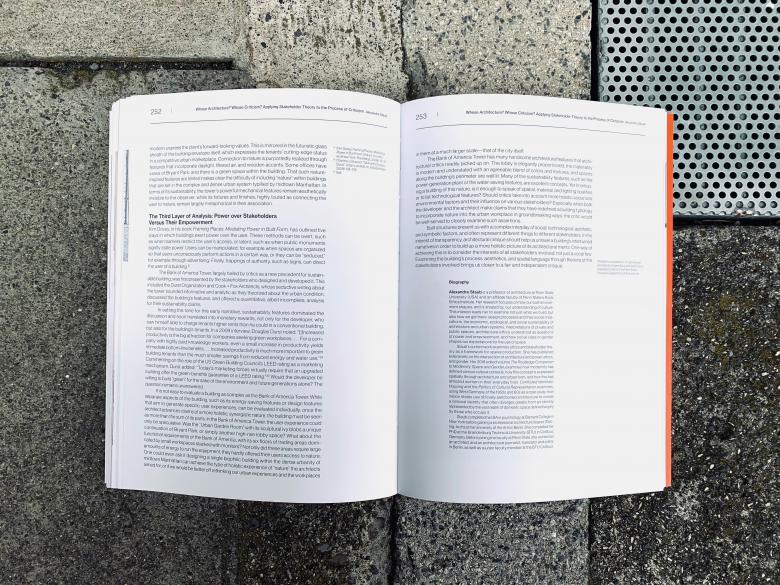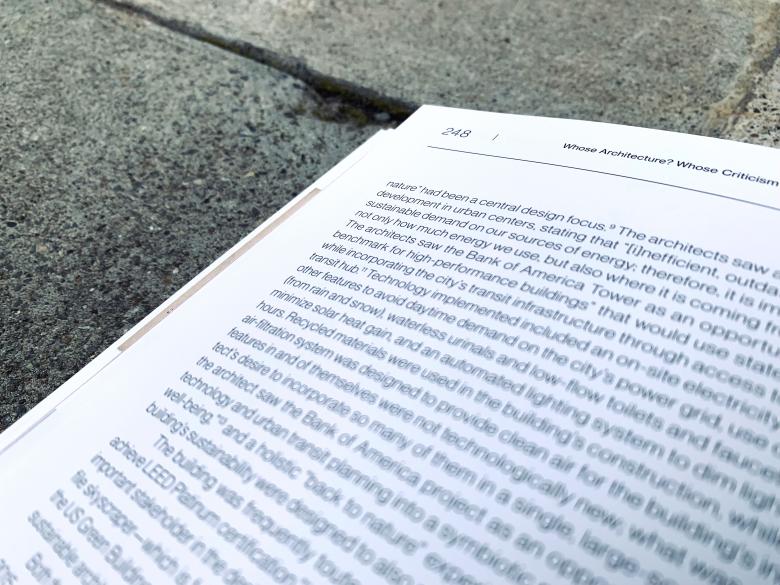Downsized, Muzzled, and Pronounced Dead – Yet Dearly Missed
Elias Baumgarten
13. dezembro 2022
Photo: Elias Baumgarten
A critical exploration of architecture is needed today more than ever, but architectural criticism is in a crisis. A new book, edited by Wilfried Wang, could bring momentum back to the discipline.
In times of climate crisis, when the order of the day is to conserve resources, we cannot afford bad architecture. So if new buildings are to be constructed, then compelling designs are called for – creations that users will appreciate, maintain, and adapt for a long time to come. In the new book On the Duty and Power of Architectural Criticism (Park Books), German architect, curator, and author Wilfried Wang writes that it is no longer acceptable to compromise the quality of buildings for the sake of making a quick profit, for example. But in practice, it’s a different story: “[T]he sad reality is that few people are concerned with questions of architectural quality. Neither politicians nor clients, nor even the majority of so-called architects, are interested in this issue.” Against this backdrop, critical writing about architecture actually does in fact take on new relevance. Wouldn’t we expect that writers would be particularly eager to contribute to the discourse at this very moment? That they would attempt to stimulate a debate beyond the boundaries of the discipline, like most recently in the 1960s and 1970s?
But writing about architecture is in a state of crisis. While the construction industry around the world continues to produce new buildings at a rapid pace, the media landscape has changed and architectural criticism is at an inflection point, explains Wilfried Wang. Indeed, many daily newspapers have reduced their coverage of architecture to a minimum or eliminated it entirely. Many of them have meanwhile severed ties with their expert critics. This development, by the way, is not limited to architectural journalism, but impacts writing about cultural topics more generally: there is little left of the arts section in most newspapers. Press tours and viewings are often poorly attended, and some museum officials complain that the work of their institutions is only sporadically discussed. Low fees pose a dilemma for freelance writers: in-depth research is economically impossible – who wants to work for unprofitable hourly wages, no matter how passionate they are? Even the trade press makes do all too often with press releases and pretty pictures – generally due to a lack of resources, but sometimes also as a conscious strategic decision. Wang criticizes online platforms in particular for heedlessly publishing the descriptions provided by architectural firms and prominently featuring their works in exchange for payment and without curation.
But this plight also has other causes. Unfortunately, comparatively few people read in-depth, well-researched articles. Even experts prefer all too often to discuss headlines and images instead of scrutinizing stories carefully, as the director of the Vorarlberg Architektur Institut (vai), Verena Konrad, revealed to us in an interview. Mediocre readership figures make it difficult to economically justify the great expense. Furthermore, the responses to critical building reviews and comments as well as to interviews with off-putting personalities range from hostility to intimidation and even threats. It is a poisoned culture of discourse that does not exist in, for example, the literary world – which knows much more biting criticism. Not all writers have the nerves to ceaselessly expose themselves to this.
Photo: Elias Baumgarten
"In fact, however, many offices today nip criticism in the bud. That is really tedious! For ten years, we at the vai have been writing about a wide variety of buildings and discussing the stories behind them as part of the weekly cover series "Leben & Wohnen" in the daily newspaper Vorarlberger Nachrichten. Although these are best-practice examples that are presented in a correspondingly favorable manner, there is a constant attempt to exert influence and control."
On the Duty and Power of Architectural Criticism has the ability to counteract this trend. The extensive collection of essays originates from an international conference held online last year. The contributions explore architectural criticism’s responsibility and potential impact from every perspective imaginable. Christophe Van Gerrewey, for instance, explains how a building can become a tool to gain further insights. He cites SANAA’s Rolex Learning Center in Lausanne (2010) as an example, using it to make statements about the evolution of work and leisure as well as libraries and office environments, the transformation of academic life, and the relationship between Japanese and Western culture. Kenneth Frampton, meanwhile, devotes himself to the links between architecture, politics, and criticism, combining this with a view into his personal development as a historian and theorist. Zheng Shiling, for his part, describes, among other things, the role of architectural criticism in China in his essay “The End of Architectural Criticism.”
Photo: Elias Baumgarten
The essays, written in English, are challenging and demand concentration. The pleasure of the intellectual exploration is diminished, however, by the book’s monotonous design, which lacks excitement and rhythm. Displeasing aspects are the many pages with little white space, giant page numbers, and design elements that overwhelm the text and intrude into the foreground. Really troublesome, however, are the selected font (Neue Haas Grotesk light), which is ill-suited for long texts, and the way the text has been set. Your eye can hardly find its bearings, and over time the words blur into a mush of letters. This is incomprehensible, especially for a book that lives from its carefully crafted texts and aspires to be read thoroughly.
Photo: Elias Baumgarten
Nonetheless, those who themselves passionately reflect on and write about architecture should enjoy reading On the Duty and Power of Architectural Criticism. The contributions by Wilfried Wang and the other authors are thought provoking, but also inspiring. For some critics, they may even provide fresh motivation.

On the Duty and Power of Architectural Criticism
Edited by Wilfried Wang
With contributions by Kenneth Frampton, Philippa Tumubweinee, Ruth Verde, Zein Zheng Shiling. Elias Constantopoulos, Manuel Cuadra, Fernando Diez, Helene Janniere, Li Xiangning, Robert McCarter, Valerio Paolo Mosco, Louise Noelle Gras, Şengul Oymen Gur, Xing Ruan, Paolo Scrivano, Ana Tostoes, Carolina Chaves Błażej Ciarkowski, Carlos Eduardo Comas, Marcos Almeida, Paolo Conrad-Bercah, Claudia Costa Cabral, Ozlem Erdoğdu Erkarslan, Murat Burak Altınışık, Mustafa Batu Kepekcioğlu, Jasna Galjer, Christophe van Gerrewey, Berna Gol, Kristen Harrison, Martin Hartung, Morten Birk, Jorgensen Kevin Low, Konstantinos Petrakos, Jaime Solares, Alexandra Staub, Horacio Torrent, Konstantinos Tsiambaos, Caroline Voet, Lynnette Widder, Seda Zafer, and Wilfried Wang
19 x 27 cm
320 Páginas
336 Illustrations
Paperback
ISBN 9783038602712
Park Books
Purchase this book
Artigos relacionados
-
A Book About Life
1 month ago
-
The Best Architecture Books of 2023
on 19/10/2023



